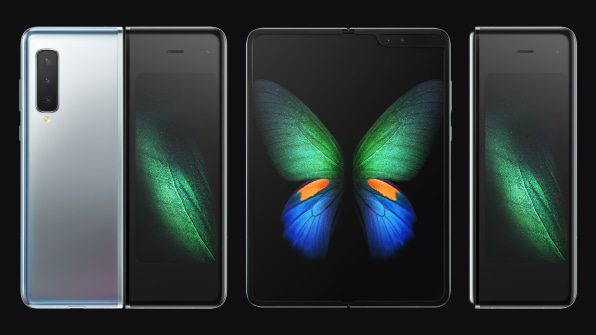A simple warning to make sure consumers don’t remove part of the phone’s screen will definitely help the latter problem, but the Fold is far from the only experimental phone that might not be quite ready for prime time. Some reviewers of vanguardist phones, like the Oppo Find X’s motorized sliding camera design, have reported durability problems. Yotaphone, the maker of the two-sided e-ink smartphone, declared bankruptcy this week. On the other hand, my personal three-month experience with a Xiaomi Mi Mix 3 has been really great despite initial fears of fragility. Its mechanical screen slide design, which uses neodymium magnets to hold the screen in place just like the proven design of some Nokias from the ’90s, feels solid–and hasn’t glitched once. Other innovative design proposals, like the dual screen Nubia X, seem to be extremely durable in many torture tests already online.
All of this is to say that, despite the occasional shattered screen, consumers have grown used to phones that are relatively resistant to daily mistreatment. It’s even easy to forget that inside their glossy glass and metal containers, our phones contain fragile, minuscule electronics that wouldn’t last a day without all that cladding, which has been tested and developed over years and generations of industrial design. These electronics are tightly packed in aluminum, ceramics, or sixth-generation Gorilla Glass, all materials that are extremely resistant to shock. We take durability for granted now, but the first generation of smartphones had incredibly fragile displays. The iPhone 4’s glass even broke if you carelessly placed it on a glass table.

But with more phone makers experimenting with foldable form factors–not to mention other new design features–we’re back at the start of the durability curve. It is a new frontier that the industry and consumers will need to cross before these new phones become ubiquitous. Still, I believe that we’ll get there sooner than the first smartphone paradigm did, since the pace of technological development is faster now than ever before, and companies are building on a decade of manufacturing experience. The Galaxy Fold’s early woes could even catalyze that process; as manufacturers like Huawei, Xiaomi, and Motorola get ready to launch their own foldables, they may go the extra mile when it comes to durability.
https://www.fastcompany.com/90338741/the-phones-of-the-future-are-here-growing-pains-and-all?partner=rss
2019-04-24 11:00:00Z
CAIiEOgKMUNdAp9kMYPPW53X8FQqFQgEKg0IACoGCAowlacCMKBPMOGbAg
Bagikan Berita Ini














0 Response to "The phones of the future are here--growing pains and all - Fast Company"
Post a Comment